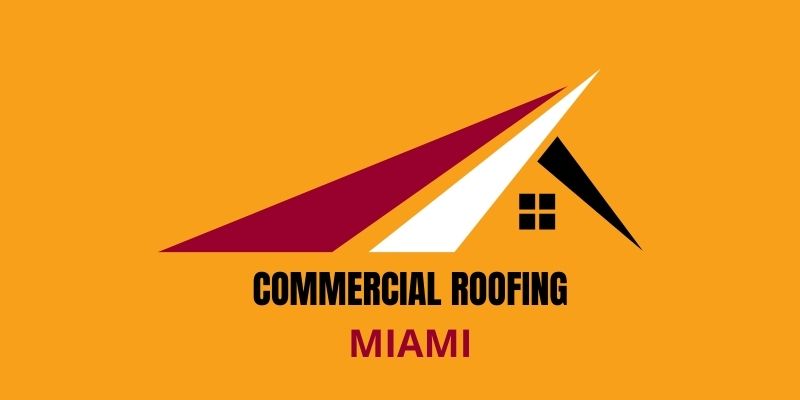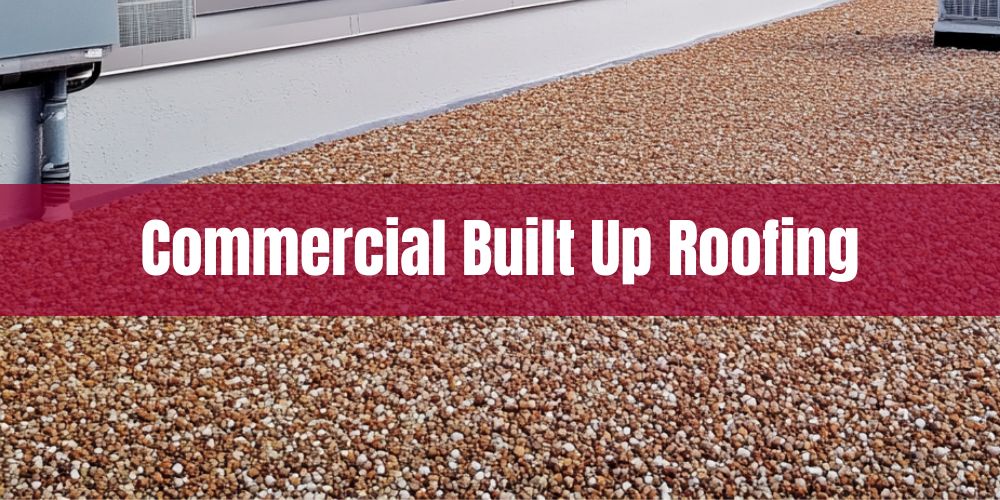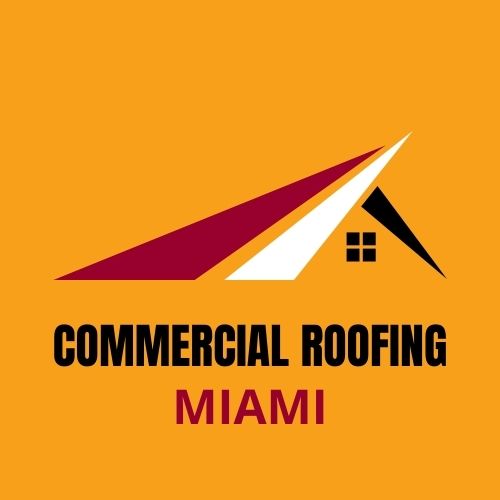Commercial built-up roofing is a type of roofing system used on commercial buildings that involves applying multiple layers of bitumen and reinforcing fabrics. These roofing systems are often chosen for their durability, weather resistance, and ability to handle heavy foot traffic. Built-up roofing is ideal for flat or low-slope roofs commonly found on commercial and industrial facilities, providing a seamless, watertight barrier. This type of roofing is known to withstand extreme weather conditions and last for several decades with proper maintenance. Commercial Roofing Miami provide commercial built-up roofing services across the Miami, Florida area.
What Is Commercial Built-Up Roofing?
Commercial built-up roofing, commonly referred to as BUR, is a type of low-slope roof system typically composed of alternating layers of bitumen and reinforcing fabrics. These layers are collectively known as felts, which are topped with a layer of aggregate, like gravel or a mineral cap sheet, to provide protection from the elements. Built-up roofing is valued for its durability, multi-layer protection, and long lifespan, often ranging from 15 to 30 years depending on the materials used. The roofing system is known for its excellent waterproofing characteristics and strong resistance to UV radiation and thermal shocks. BUR systems are commonly installed using a hot asphalt or cold adhesive application procedure depending on the specific requirements and building codes. Due to its robustness, built-up roofing is often chosen for commercial buildings requiring reliable protection over large surface areas.
Miami, Florida, with its warm climate, high humidity, and significant precipitation, sees commercial built-up roofing as a preferred choice due to its excellent waterproofing and UV resistance. Considering Miami's maximum temperatures and frequent rainfalls, the addition of reflective coatings to a BUR system could enhance energy efficiency and provide additional weatherproofing in this region.
Have a question about an upcoming project?
How Does Built-Up Roofing Perform in Miami's Climate?
Built-up roofing (BUR) performs well in Miami's hot and humid climate due to its durability and resilience. The multiple layers of roofing felt and bitumen provide excellent protection against moisture infiltration, which is crucial in Miami's rainy season. Additionally, the gravel or cap sheet top layer helps in reflecting sunlight, which aids in temperature regulation of the building.
- Weather Resistance: Durable in Miami's hurricane-prone, hot and humid environment.
- Moisture Barrier: Efficiently prevents water leakage during heavy rainfalls and storms.
- UV Radiation Reflection: Gravel or cap sheet layer reflects sunlight, reducing building heat absorption.
- Longevity: Withstands Miami's harsh climate for long service life with proper maintenance.
- Thermal Efficiency: Provides insulation against Florida's intense heat, improving indoor comfort.
1. Weather Resistance: Durable in Miami's hurricane-prone, hot and humid environment
Weather resistance refers to a roofing system's ability to withstand extreme conditions, such as high winds, heavy rain, and intense heat, without deteriorating. Built-up roofing systems perform well in Miami's climate due to their multi-layer composition, which offers enhanced protection against the city's frequent hurricanes and high humidity. This durability makes them a reliable choice for commercial buildings needing long-lasting performance in challenging weather conditions. To maximize the weather resistance of a built-up roofing system, investing in high-quality materials and ensuring professional installation is crucial. Regular maintenance, including inspections for any damage after severe weather events, will help preserve the roof's integrity and function. By choosing a built-up roof, commercial property owners in Miami can achieve peace of mind knowing their buildings are effectively safeguarded against harsh climatic elements.
2. Moisture Barrier: Efficiently prevents water leakage during heavy rainfalls and storms.
A moisture barrier in commercial roofing is a protective layer that prevents water penetration and damage during severe weather conditions. Proper moisture barriers are crucial in Miami's climate, which is characterized by frequent heavy rainfalls and storms. They help maintain the structural integrity of a building by preventing water infiltration that can lead to internal damage and mold growth. To ensure optimal performance, commercial roofs should integrate high-quality moisture barriers specifically designed to withstand Miami's intense weather cycles. Regular maintenance and inspections help identify potential breaches or weaknesses in the barrier, allowing for timely repairs. The use of advanced materials that combine both flexibility and durability can further enhance a roof's ability to resist water leakage in adverse weather conditions.
3. UV Radiation Reflection: Gravel or cap sheet layer reflects sunlight, reducing building heat absorption.
UV radiation reflection refers to the capability of certain roofing materials, such as gravel or cap sheets, to deflect sunlight, thereby minimizing heat absorption by the building. Using materials that reflect UV radiation is crucial in Miami's climate, where intense sun and high temperatures can significantly increase cooling costs in commercial buildings. By reducing the roof's heat absorption, buildings experience reduced thermal transfer to interior spaces, leading to decreased reliance on air conditioning systems and promoting energy efficiency.
Utilizing a gravel or cap sheet layer as part of a built-up roofing system not only enhances the roof's durability against Miami's harsh sun exposure but also directly contributes to sustainability efforts by lowering carbon footprints. Regular maintenance and inspections can help sustain these reflective characteristics, ensuring ongoing thermal performance and longevity of the roofing system. By choosing such solutions, commercial buildings can effectively manage their operational energy demands while extending the lifespan of their roofing installations.
4. Longevity: Withstands Miami's harsh climate for long service life with proper maintenance.
Longevity refers to the durability and extended lifespan a commercial roofing system can achieve through regular upkeep, even in challenging conditions like Miami's humid and hurricane-prone environment. The resilience of built-up roofing systems is crucial for maintaining structural integrity in Miami's volatile climate, which includes heavy rainfalls and high humidity levels. Consistent maintenance ensures that built-up roofs remain robust against moisture intrusion and wind damage, providing long-term protection for commercial structures.
Utilizing high-quality materials and applying protective coatings can enhance the roof's durability, safeguarding it from common weather-related issues. Regular inspections and timely repairs are essential to address potential vulnerabilities before they escalate into significant problems. By doing so, property owners can maximize their roof's service life while minimizing the risk of expensive restorations or replacements down the line.
5. Thermal Efficiency: Provides insulation against Florida's intense heat, improving indoor comfort.
Thermal efficiency is the effectiveness of a roofing system in maintaining stable indoor temperatures by minimizing heat transfer from the exterior to the interior space. Effective thermal efficiency is crucial for built-up roofing performance in Miami's climate, where intense sunshine and high temperatures are prevalent. It significantly improves energy consumption by reducing the dependency on air conditioning, thereby enhancing the overall comfort inside commercial buildings.
The advanced insulation properties of built-up roofing offer a durable solution to combat Florida’s heat, allowing businesses to benefit from reduced energy costs and a more stable indoor environment. To further maximize thermal efficiency, additional reflective coatings can be applied to the roofing system, enhancing its ability to resist heat absorption and extend its lifespan. Regular maintenance and inspections can ensure the insulation qualities remain intact and effective, sustaining long-term energy savings.
What Are Common Issues with Built-Up Roofing in Miami?
Built-Up Roofing (BUR) in Miami often faces issues related to weather conditions and maintenance challenges. The high heat and humidity, frequent storms, and exposure to UV rays can degrade materials faster, leading to leaks and structural damage. Regular maintenance and inspections are crucial to extend the lifespan and performance of built-up roofing systems in this area.
- Weather Resistance: Built-up roofing may struggle with Miami's frequent storms and high humidity levels.
- UV Ray Exposure: Constant sun exposure degrades materials, leading to potential leaks and deterioration.
- Poor Drainage: Heavy rainfall can overwhelm drainage systems, resulting in ponding and structural strain.
- Maintenance Needs: Regular inspections are essential to prevent small issues from developing into major problems.
- Material Aging: Miami’s climate accelerates deterioration, requiring earlier-than-usual repairs and replacements.
1. Weather Resistance: Built-up roofing may struggle with Miami's frequent storms and high humidity levels
Weather resistance refers to a roofing material's capability to withstand adverse environmental conditions such as heavy storms and moisture-laden air without deterioration. Built-up roofing faces challenges in Miami due to its consistent exposure to severe weather conditions, such as frequent storms and high humidity. These elements can accelerate the degradation of the roofing material, leading to issues like leaks and structural damage that compromise its effectiveness.
To enhance the weather resistance of built-up roofing, regular maintenance and inspections are critical. Implementing protective measures like sealants or coatings can help shield the roofing from water infiltration and reduce the impact of heavy storms. Additionally, employing proper drainage systems can prevent water accumulation, reducing the risk of damage during Miami's rainy season.
2. UV Ray Exposure: Constant sun exposure degrades materials, leading to potential leaks and deterioration
UV ray exposure refers to the constant bombardment of roofing materials by ultraviolet radiation, which accelerates their degradation and increases the likelihood of leaks and structural failure. Commercial roofing in Miami is particularly susceptible to UV ray exposure due to the region's abundant sunshine and high UV index. This increases the risk of material breakdown, leading to potential leaks and compromising the roof's ability to protect the building underneath.
Regular maintenance and the application of UV-resistant coatings can help mitigate the harmful effects of UV rays on commercial roofs. By using reflective and durable materials, building owners can enhance the lifespan and effectiveness of their roofing systems. Proactive measures, such as routine inspections and timely repairs, are essential in preventing extensive damage and maintaining a watertight seal on commercial structures.
3. Poor Drainage: Heavy rainfall can overwhelm drainage systems, resulting in ponding and structural strain
Poor drainage refers to the inability of a roofing system to effectively channel rainwater away, leading to water accumulation and increased pressure on roof structures. Poor drainage is a critical issue in commercial roofing, especially in regions like Miami that experience heavy rainfall, as it can exacerbate strain on built-up roofing systems. The accumulation of water, or ponding, not only adds weight but can also lead to water infiltration, compromising the roof's integrity and shortening its lifespan.
Efficient drainage design and regular maintenance are essential to prevent water-related damage and ensure the robustness of commercial roofing systems. This can include the installation of additional drains or scuppers and ensuring the roofing surface has an adequate slope. Routine inspections help identify and rectify drainage problems before they lead to significant structural or water damage, making them a wise investment in long-term roof management.
4. Maintenance Needs: Regular inspections are essential to prevent small issues from developing into major problems
Regular inspections for maintenance are crucial to identifying and addressing minor issues in commercial roofing before they escalate into significant and costly damages, ensuring longevity and efficient performance of the roof system. Commercial roofing in Miami is particularly susceptible to issues due to the area's high humidity, frequent rainfall, and intense sun exposure, all of which can exacerbate wear and tear on roofing materials. Regular inspections allow for timely identification of water damage, leaks, or UV-induced deterioration, which are prevalent challenges in Miami's climate.
By conducting regular inspections, property managers can proactively manage potential roofing failures, maintain optimal building conditions, and mitigate the risk of sudden, large-scale repairs. This preventative approach also helps in planning budget allocations effectively and ensures that commercial buildings stay up to code with local regulations, promoting a safer environment for occupants and improving property value.
5. Material Aging: Miami’s climate accelerates deterioration, requiring earlier-than-usual repairs and replacements
Material aging refers to the process where prolonged exposure to Miami's humid, salt-laden air and intense UV radiation speeds up the degradation of roofing materials, necessitating more frequent maintenance or replacement. The rapid material aging is a critical issue for built-up roofing systems in Miami due to the area's unique climate conditions. These roofs are more prone to developing issues such as splitting, blistering, and loss of surface granules under Miami's harsh environmental factors. Consequently, the lifespan of built-up roofs in this region tends to be shorter, demanding attentive maintenance strategies.
Employing strategies like choosing roofing materials with enhanced UV protection and applying reflective coatings can mitigate the effects of material aging. Regular maintenance checks, including inspections for early signs of wear, help manage potential issues before they escalate. Investing in these preventative measures ensures the longevity of commercial roofing systems in Miami's challenging climate.
Are There Environmental Benefits to Built-Up Roofing in Miami?
Yes, built-up roofing offers several environmental benefits in Miami. Its capability to reflect solar heat can significantly reduce energy consumption, which is crucial in Miami's hot climate. Additionally, its durability reduces the need for frequent replacements, minimizing environmental waste over time.
- Solar Reflectivity: It reflects heat, lowering cooling demands in Miami's hot climate.
- Energy Efficiency: Cuts energy use, potentially reducing Miami buildings' carbon footprints.
- Sustainable Materials: Often includes recycled materials, contributing to environmentally friendly construction.
- Durability: Long-lasting materials reduce frequency of replacements, minimizing waste in landfills.
- Temperature Regulation: Helps maintain a stable indoor climate, lessening reliance on HVAC systems.
1. Solar Reflectivity: It reflects heat, lowering cooling demands in Miami's hot climate.
Solar reflectivity is the ability of a roofing material to reflect sunlight and heat away from a building, thereby reducing cooling demands and energy costs. Utilizing solar reflectivity in commercial roofing can significantly decrease air conditioning needs in Miami's hot climate, where energy consumption due to heat is a major concern. Reflective roofing surfaces contribute to a building's energy efficiency, offering both environmental and cost-saving advantages by reducing the demand on air conditioning systems.
This reduction in energy demand not only supports a more sustainable built environment by lessening greenhouse gas emissions from power plants but also helps mitigate the urban heat island effect in densely populated areas like Miami. Additionally, reflective roofing materials can extend the lifespan of the roof by reducing thermal shock, which is caused by temperature fluctuations that can lead to material stress and degradation over time.
2. Energy Efficiency: Cuts energy use, potentially reducing Miami buildings' carbon footprints.
Energy efficiency is the capacity of a roofing system, such as modified bitumen, to lessen energy consumption by reflecting rather than absorbing heat, which is crucial in warm climates like Miami's. Energy-efficient roofing systems can significantly lower the carbon footprint of commercial buildings in Miami by reducing the reliance on air conditioning and, subsequently, the energy consumption associated with cooling efforts. This capability aligns with the discussion on environmental benefits, as energy-efficient systems are integral to achieving sustainability goals and mitigating environmental impact in regions prone to high temperatures.
Enhancing the energy efficiency of commercial roofs in Miami not only contributes to cost savings through lower energy bills but also supports urban sustainability efforts by reducing the overall demand for electricity. By employing energy-efficient roofing materials, such as reflective coatings on modified bitumen roofs, building managers can play a role in decreasing the heat retention of the urban environment, thereby contributing to a reduction in the urban heat island effect. This sustainable approach not only benefits individual building performance but also promotes a broader environmental benefit for the community.
3. Sustainable Materials: Often includes recycled materials, contributing to environmentally friendly construction
Sustainable materials in commercial roofing refer to the use of recycled and eco-friendly components that minimize environmental impact and promote sustainability. The use of sustainable materials in commercial roofing can enhance the environmental benefits of built-up roofing in Miami by reducing waste and conserving natural resources. This aligns with the growing demand for green building practices, which are crucial in regions like Miami that face significant environmental challenges.
Commercial roofing systems incorporating sustainable materials help reduce the carbon footprint of construction projects, supporting global efforts for environmental preservation. By opting for these materials, businesses can also potentially qualify for green certifications and tax incentives, encouraging broader adoption of eco-friendly building practices. Implementing roofing systems with sustainable materials can also improve the energy efficiency and durability of commercial buildings, providing long-term cost savings and enhanced performance.
4. Durability: Long-lasting materials reduce frequency of replacements, minimizing waste in landfills.
Durability refers to the ability of commercial roofing materials to withstand environmental stresses over time, reducing the need for frequent replacements and consequently minimizing landfill waste. Built-up roofing systems, widely used in Miami, offer considerable durability by using multiple layers of bitumen and reinforcing fabrics, making them resistant to the region's heavy rainfall and high humidity. This durability contributes to a longer lifespan for the roof, resulting in fewer replacements and reducing the environmental burden associated with roofing waste.
Choosing durable materials for commercial roofing not only supports sustainability by lessening landfill contributions but also lowers maintenance costs over the life of the roof. Regular inspections and maintenance of these durable built-up roofing systems can further enhance their environmental benefits by ensuring they remain effective and long-lasting. Additionally, businesses can further reduce their environmental footprint by selecting manufacturers committed to sustainable material sourcing and production practices.
5. Temperature Regulation: Helps maintain a stable indoor climate, lessening reliance on HVAC systems
Temperature regulation refers to the ability of a commercial roofing system to control heat exchange, thus maintaining an optimal indoor environment without excessive use of heating, ventilation, and air conditioning systems. In a city like Miami, where the climate is predominantly hot and humid, efficient temperature regulation of commercial buildings can significantly reduce the environmental footprint of built-up roofing systems by lowering energy consumption. This energy efficiency translates directly into reduced HVAC usage, lessening the impact on local power grids and decreasing greenhouse gas emissions associated with electricity production.
Additionally, temperature regulation through roofing can enhance occupant comfort by keeping indoor temperatures consistent and minimizing fluctuations. Optimal temperature regulation can improve a building's overall energy performance rating and qualify it for sustainability certifications. This makes temperature-efficient roofing systems a strategic investment for environmentally conscious businesses operating in urban centers.


